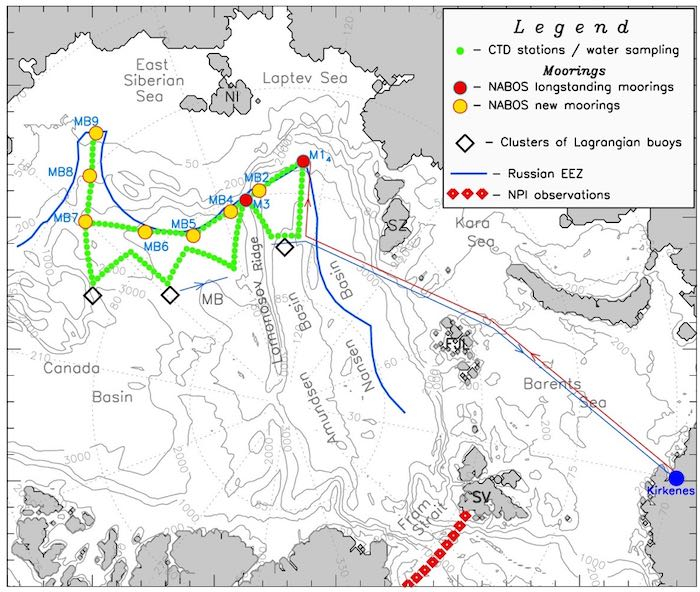Well, since my last journal entry in December, my project has changed. Because Jim Thomson's CODA (Coastal Ocean Dynamics of the Arctic) cruise was the last in the grant cycle, I will not be accompanying him on an expedition (Information about their preliminary findings can be found in the 2020 Expedition pages). Instead, I will be working with Igor Polyakov of the University of Alaska Fairbanks on a continuation of the NABOS (Nansen and Amundsen Basins Observational System) program. I will be spending about 40 days on an icebreaker investigating freshwater current properties in the eastern Eurasian Basin of the Arctic Ocean. As of now, I will be sailing aboard the RV "Akademik Tryoshnikov" from Kirkenes, Norway through portions of the Barents, Laptev, and East Siberian Seas north of the Siberian Arctic. I say, "as of now," because with COVID-19, nothing is certain, and I will "go with the flow." Whether it's studying the effects of wave dynamics on coastal erosion in one area of the Arctic or studying freshwater currents in an entirely different region with a new research team. I am grateful for the opportunities to participate and learn.
 NABOS Cruise Map: September 10-October 20, 2021 - RV "Akademic Tryoshnikov"
NABOS Cruise Map: September 10-October 20, 2021 - RV "Akademic Tryoshnikov"
In the meantime, I was able to "flow" in an entirely different direction and in a different part of the world. Two years ago, I applied for a fellowship with Ecology Project International (EPI) to be part of a teacher cohort studying leatherback sea turtles in Costa Rica. I did not expect to receive the grant because of the large number of applicants. Shortly after hearing from PolarTREC, however, I found out that I was accepted. Unfortunately, COVID-19 canceled these plans as well, and I figured that I would not be able to participate because the program's future was in doubt. Earlier this Spring, EPI was able to run the program, so I changed some summer plans and joined 9 other teachers in the Pacuare Reserve. Pacuare Reserve is located on the Carribbean coast and constitutes 6km of coastline and almost 2000 acres of tropical forest. It is one of the most important leatherback sea turtle nesting sites in Costa Rica. EPI, in concert with the local community, runs conservation and education programs that bring teachers and students to the reserve to work alongside researchers. We had the opportunity to engage in the turtle census: 4 hours walking along the beach (rain or moonlight), dressed in black clothing, no lights, looking for nesting leatherbacks. When we found them digging their nests (we saw 3 over the course of 4 nights), we observed their behavior, collected their eggs, measured and took inventory of their health, and then re-buried the eggs in a protected hatchery. Since we were present at the end of the nesting season, we also got to see hatching leatherbacks, record and excavate nests, and release the babies above the tideline. Watching the turtles make their way toward the ocean and knowing that a very few of the females would travel hundreds of thousands of miles during their lives (little information is known about the specific behavior and migration patterns) to return to the beach after 10-15 years to lay their eggs was truly awe-inspiring. Their journey gives even broader meaning to "going with the flow."
 Recently hatched baby leatherback sea turtles. Pacuare Reserve, Costa Rica
Recently hatched baby leatherback sea turtles. Pacuare Reserve, Costa Rica
 A baby leatherback sea turtle leaves tracks as it make its way to the ocean.
A baby leatherback sea turtle leaves tracks as it make its way to the ocean.

Comments
Add new comment